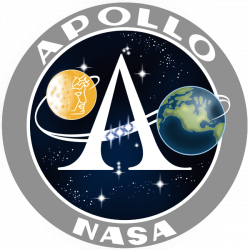Apollo Missions

Credit: NASA
NASA's Apollo program resulted in the first humans walking on the Moon. The first four flights tested the equipment. Six of the other 7 flights successfully landed on the Moon. The first crew (Apollo 11) landed on the Moon on 1969. The last flight (Apollo 17) left the Moon in 1972. The Apollo missions followed NASA's Mercury and Gemini missions.
A total of 12 astronauts have walked on the Moon. While they were there they carried out scientific experiments, studied the lunar surface and collected Moon rocks. The missions brought 400 kg of rock and dust back from the Moon's surface to Earth. This rock is still being studied by scientists in labs all over the world.
The first crew to orbit the Moon was on the Apollo 8 mission. The three astronauts inside—Frank Borman, James Lovell, and William Anders—were the first humans to see and photograph an 'Earthrise'. Apollo 8 took almost three days to travel to the Moon. The crew orbited the Moon ten times over the course of twenty hours before returning to Earth.
The first mission to land on the Moon was Apollo 11. Neil Armstrong and Buzz Aldrin became the first people to walk on the Moon on 20th July 1969. When he stepped onto the Moon, Neil Armstrong famously said:
That's one small step for a man, one giant leap for mankind

Credit: NASA
The third member of the Apollo 11 crew, Michael Collins, stayed inside the spacecraft, in orbit around the Moon. This was to make sure all three astronauts made it safely back to Earth. All 3 astronauts landed back on Earth in the Pacific Ocean on 24th July.
The Apollo 13 mission didn't land on the Moon due to a serious fault with the oxygen supply. Instead, the crew made a loop around the Moon and returned to Earth. All landed safely. Because of the large loop they made around the Moon, the Apollo 13 crew have travelled further from Earth than any other astronauts.

